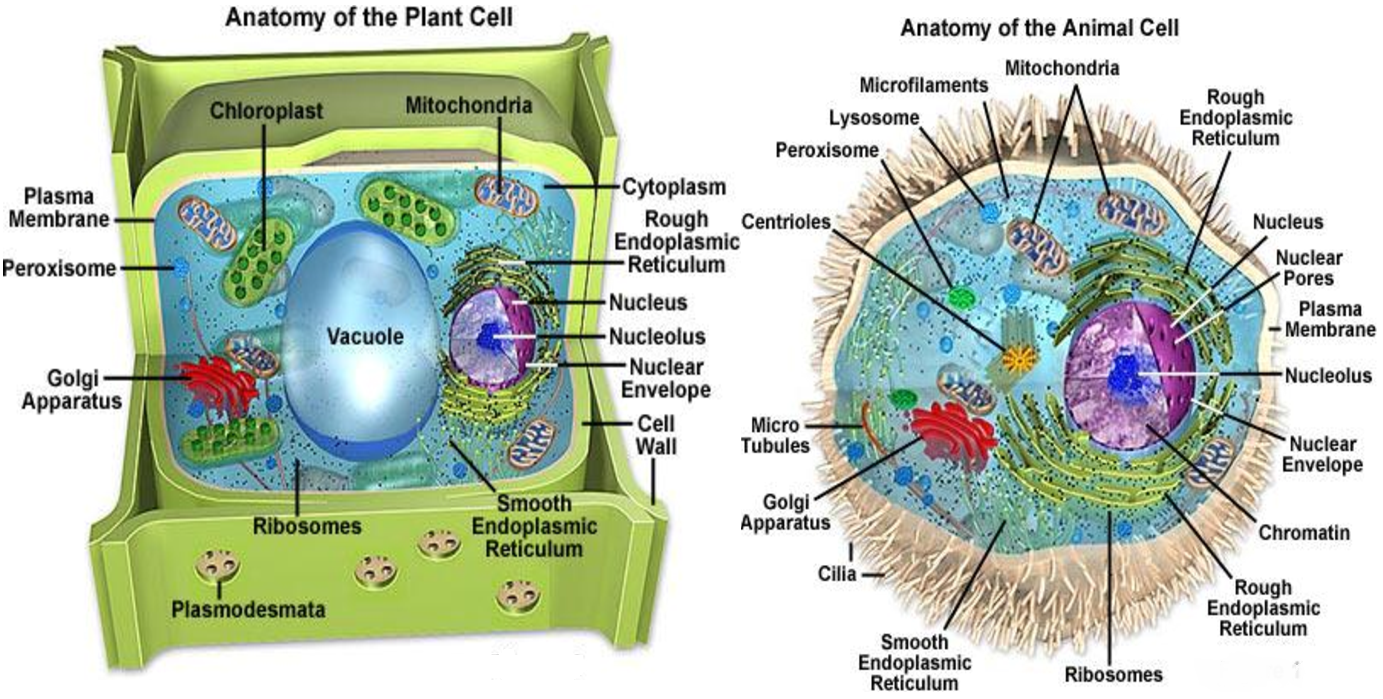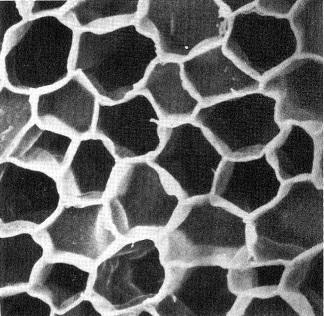| Picture |
Assessments
|
MS-LS1-2.

Cell Structures
Formative Assessment Goes Here
Packet
- Quia Vocab and Concepts Quizzes
- practice assessments
Packet
|
MS-LS1-2
Develop and use a model to describe the function of a cell as a whole and
ways parts of cells contribute to the function.
Within cells, special
structures are responsible for particular functions, and the cell membrane
forms the boundary that controls what enters and leaves the cell (LS1.A as
in MS-LS1-2). In multicellular organisms, the body is a system of multiple
interacting subsystems, which are groups of cells that work together to
form tissues and organs that are specialized for particular body functions
(LS1.A as in MSLS1-3).
Planning and Carrying Out Investigations
●
Plan an investigation individually and collaboratively, and in the design: identify independent and dependent variables and controls, what tools are needed to do the gathering, how measurements will be recorded, and how many data are needed to support a claim.
Students could collaboratively plan a [hypothetical] investigation [to determine whether] all living things are made up of cells and in the plan, students could identify independent and dependent variables and controls and how many data would be needed to support a claim. MS-LS1-2
Constructing Explanations and Designing Solutions
● Apply scientific reasoning to show why the data or evidence is adequate for the explanation or conclusion.
Students could apply scientific reasoning to show why the evidence [that] the cell membrane forms the boundary that controls what enters and leaves the cell is adequate for the explanation. MS-LS1-2
Obtaining, Evaluating, and Communicating Information
●
Communicate scientific and/or technical information in writing and/or through oral presentations. Students could communicate scientific information through oral presentations [about how] within cells, special structures are responsible for particular functions. MS-LS1-2
Systems and System Models
●Models
are limited in that they only represent certain aspects of the system
under study.
Students could construct an argument that models are
limited in that they only represent certain aspects of the system under
study, [using as evidence a model of] special structures within cells that
are responsible for particular functions. MS-LS1-2
|
MS-LS1-1.

Cell Theory
Formative Assessment Goes Here
Graded Packet
- Quia Vocab and Concepts Quizzes
- practice assessments
Graded Packet
|
MS-LS1-1. Conduct an
investigation to provide evidence that living things are made of cells;
either one cell or many different numbers and types of cells.
All living things are made
up of cells, which is the smallest unit that can be said to be alive. An
organism may consist of one single cell (unicellular) or many different
numbers and types of cells (multicellular) (LS1.A as in MS-LS1-1).
Analyzing and Interpreting Data
●
Consider limitations of data analysis (e.g., measurement error), and/or seek to improve precision and accuracy of data with better technological tools and methods (e.g., multiple trials).
Students could consider limitations of data analysis, including measurement error, [when determining whether] cells are the smallest unit that can be said to be alive. MS-LS1-1
Using Mathematical and Computational Thinking
● Apply mathematical representations to describe and/or support scientific conclusions and design solutions
Students could apply mathematic representations to describe [the relationship between the] numbers and types of cells in an organism. MS-LS1-1
Engaging in Argument from Evidence
● Compare and critique two arguments on the same topic and analyze whether they emphasize similar or different evidence and/or interpretation of facts.
Students could compare and critique two arguments that cells are the smallest unit that can be said to be alive, and analyze whether the arguments emphasize similar or different evidence and/or interpretation of facts. MS-LS1-1
Science Models, Laws, Mechanisms, and
Theories Explain Natural Phenomena
● Theories are
explanations for observable phenomena.
Students could obtain and
communicate information about how theories are explanations for observable
phenomena, [including that] all living things are made up of cells.
MS-LS1-1
Science Addresses Questions
About the Natural and Material World
● Scientific
knowledge is constrained by human capacity, technology, and materials.
Students could construct an argument for how scientific knowledge is
constrained by human capacity and technology, [using as evidence the
scientific knowledge that] all living things are made up of cells.
MS-LS1-1
|
MS-LS1-3.

Human Body
Formative Assessment Goes Here
Packet
- Quia Vocab and Concepts Quizzes
- practice assessments
Packet
|
MS-LS1-3 Use argument
supported by evidence for how the body is a system of interacting
subsystems composed of groups of cells.
In multicellular organisms, the body is a system of multiple
interacting subsystems, which are groups of cells that work together to
form tissues and organs that are specialized for particular body functions
(LS1.A as in MSLS1-3).
Asking Questions and Defining Problems
●Ask questions that require sufficient and appropriate empirical
evidence to answer.
Students could ask questions about how tissues and
organs are specialized for particular body functions, [ensuring that their
questions] require sufficient and appropriate empirical evidence to
answer. MS-LS1-3
Developing and Using Models
● Develop a model to
describe unobservable mechanisms.
Students could develop a model to
describe [that] body subsystems are groups of cells that work together to
form tissues and organs. MS-LS1-3
Stability & Change
● Small changes in one part of a system might cause large changes in another part. Students could construct an argument that small changes in one part of a multicellular organism might cause large changes in another part of the organism [because] the body is a system of multiple interacting subsystems. MS-LS1-3
Patterns
Macroscopic patterns are related to the nature of microscopic and
atomic-level structure.
Students could ask questions about how macroscopic
patterns are related to the nature of microscopic and atomic-level
structure in multicellular organisms, [where] groups of cells work
together to form tissues and organs that are specialized for particular
body functions. MS-LS1-3
|



